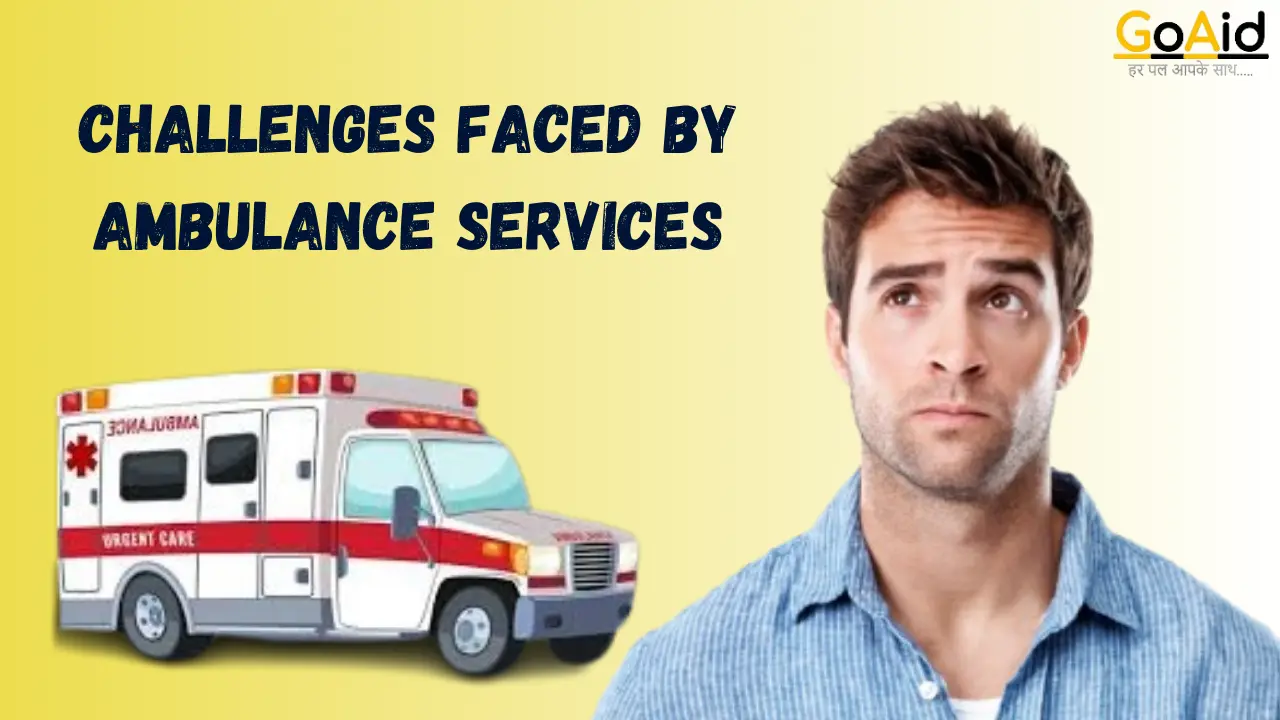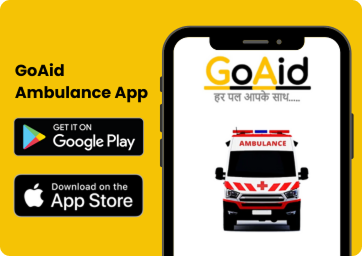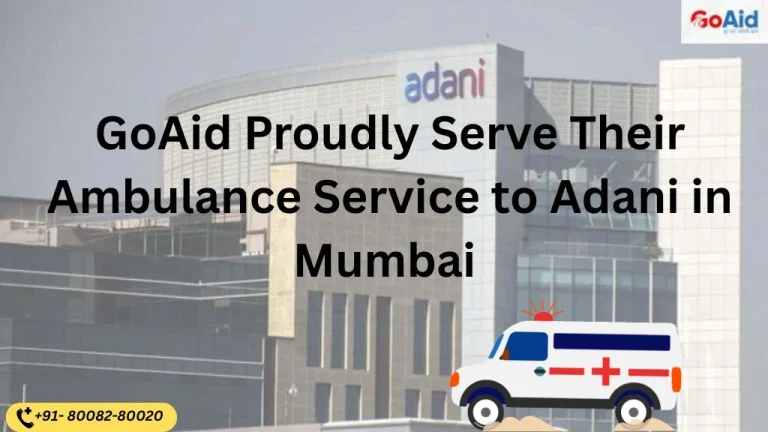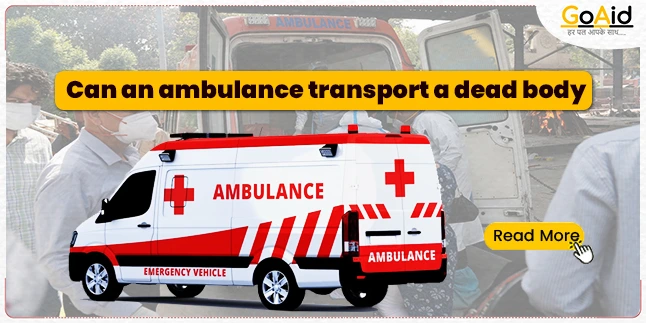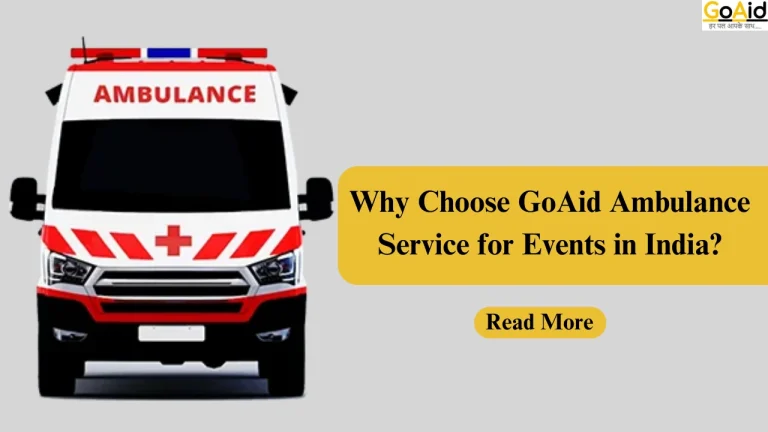Whenever someone books an ambulance, they always expect them arrive to at the desired location within a short frame of time. But for all time, it cannot be possible due to some unbearable challenges faced by Ambulance Services.
Ambulance Services not only face those challenges but also Overcome Obstacles to serve you with the best Emergency Medical Care. Do you know what those challenges are faced by Ambulance Services? If you donŌĆÖt, then you just need to know about it. In this blog, we have added comprehensive details about the Challenges faced by Ambulance Services & how they overcome those obstacles finely.
So, letŌĆÖs start:
What are the Challenges that Faced by Ambulance Services?
These are the challenges faced by Ambulance services daily:
- Traffic Congestion: Ambulance services often struggle with significant delays due to heavy traffic, particularly in urban areas, which can critically impact response times and patient outcomes.
- Limited Funding: Inadequate financial resources restrict the ability to acquire advanced medical equipment, maintain vehicles, and provide comprehensive staff training, ultimately affecting service quality.
- Staff Shortages: A shortage of qualified emergency medical technicians (EMTs) and paramedics leads to increased workloads, fatigue, and potentially reduced effectiveness in emergency response.
- Equipment Malfunctions: The use of outdated or malfunctioning medical equipment can compromise the quality of patient care and pose significant risks during emergency medical interventions.
- Geographical Barriers: Ambulance services in rural or remote regions face challenges in reaching patients quickly due to long distances, difficult terrain, and limited infrastructure.
- Communication Issues: Inefficient or unreliable communication systems can hinder coordination between ambulance crews, dispatch centers, and hospitals, delaying critical care.
- High Call Volumes: An overwhelming number of emergency calls can strain resources, leading to longer response times and potentially impacting patient care quality.
- Inadequate Training: Insufficient or outdated training programs for EMTs and paramedics can result in a workforce that is not fully equipped to handle a variety of emergencies effectively.
- Violence and Safety Risks: Ambulance personnel frequently encounter violent or hostile situations, posing significant risks to their safety and complicating the provision of care.
- Regulatory Compliance: Adhering to a complex array of regulations and standards requires substantial administrative effort and resources, which can be burdensome for ambulance services.
- Healthcare Integration: Effective coordination with hospitals and other healthcare providers is essential for seamless patient care but can be challenging due to differing protocols and communication barriers.
- Mental Health Crises: Addressing the needs of patients experiencing mental health emergencies requires specialized training and approaches, which are not always adequately provided.
- Language Barriers: Communication difficulties with patients who do not speak the primary language of the responders can impede accurate assessment and delivery of care.
- Public Misconceptions: Misunderstandings about the role and capabilities of ambulance services can lead to misuse of emergency resources and unrealistic expectations from the public.
- Cost of Services: High operational costs can limit the availability of ambulance services, making them less accessible and affordable for patients in need.
- Technological Advancements: Keeping pace with rapid technological changes requires continuous investment in new equipment and ongoing training for personnel, which can be financially and logistically challenging.
- Weather Conditions: Adverse weather conditions, such as heavy rain, snow, or hurricanes, can severely impede the ability of ambulances to reach patients quickly and safely.
- Urban Density: High population density in urban areas creates logistical challenges, including navigating congested streets and high-rise buildings, which can delay emergency response times.
- Inter-agency Coordination: Collaboration with multiple emergency response agencies, such as fire departments and police, is crucial but can be complicated by differing procedures and communication systems.
- Patient Consent: Obtaining informed consent for medical treatment in emergencies can be legally and ethically complex, especially when patients are unconscious or unable to communicate.
How do Ambulance Services overcome these Challenges?
This is how Ambulance Services overcomes all the challenges we have listed above:
- Traffic Congestion: Implementing advanced GPS and traffic management systems helps ambulance crews find the quickest routes while collaborating with local authorities can facilitate priority passage through congested areas.
- Limited Funding: Securing additional funding through government grants, public-private partnerships, and community support initiatives can enhance resources. Efficient budgeting and cost management also help maximize available funds.
- Staff Shortages: Offering competitive salaries, benefits, and career development opportunities can attract and retain staff. Implementing training programs and recruitment drives can help address shortages.
- Equipment Malfunctions: Regular maintenance schedules and investing in high-quality, reliable equipment ensure that medical devices are functional. Establishing quick-response protocols for equipment failure can also mitigate risks.
- Geographical Barriers: Utilizing air ambulances and off-road vehicles can improve access to remote areas. Strategic placement of ambulances in key locations helps reduce response times.
- Communication Issues: Upgrading communication technology, such as digital radios and mobile data terminals, enhances connectivity. Establishing standardized protocols for information relay ensures clear and efficient communication.
- High Call Volumes: Implementing triage systems helps prioritize calls based on severity. Expanding the fleet and staff during peak times can manage high volumes more effectively.
- Inadequate Training: Continuous education and training programs ensure EMTs and paramedics stay updated with the latest medical protocols and technologies. Partnering with educational institutions for specialized training can enhance skills.
- Violence and Safety Risks: Providing self-defense training and equipping ambulances with security features can enhance crew safety. Collaborating with law enforcement for secure response in high-risk areas is also crucial.
- Regulatory Compliance: Designating a compliance officer to oversee and ensure adherence to regulations can streamline processes. Regular training on regulatory updates keeps staff informed and compliant.
- Healthcare Integration: Establishing strong partnerships and communication channels with hospitals and other healthcare providers ensures coordinated care. Shared electronic health records facilitate seamless information exchange.
- Mental Health Crises: Specialized training in mental health care for EMTs and paramedics equips them to handle such emergencies effectively. Collaborating with mental health professionals for support and guidance is beneficial.
- Language Barriers: Employing multilingual staff and using translation services or language line support ensures effective communication with non-English speaking patients.
- Public Misconceptions: Conducting public awareness campaigns and community education programs helps clarify the role and capabilities of ambulance services, promoting appropriate use of emergency resources.
- Cost of Services: Working with insurance companies to ensure coverage and seeking government subsidies can make services more affordable. Implementing sliding scale fees based on patient income levels can also help.
- Technological Advancements: Investing in continuous training for staff on new technologies and allocating funds for regular equipment upgrades ensure ambulance services stay current with medical advancements.
- Weather Conditions: Equipping ambulances with weather-appropriate gear and vehicles designed for various weather conditions improves response capabilities. Developing contingency plans for extreme weather scenarios ensures preparedness.
- Urban Density: Utilizing smaller, more maneuverable vehicles for congested urban areas and employing innovative approaches like bike ambulances can improve response times in densely populated regions.
- Inter-agency Coordination: Establishing joint training exercises and developing interoperable communication systems facilitate better coordination with other emergency response agencies.
- Patient Consent: Training staff on ethical and legal aspects of patient consent ensures informed decision-making. Implementing clear protocols for situations where consent cannot be obtained helps address legal complexities.
Conclusion
In conclusion, ambulance services face numerous challenges, from traffic congestion and funding limitations to staff shortages and regulatory compliance. By adopting innovative solutions such as advanced technology, comprehensive training, and strategic partnerships, they can effectively overcome these obstacles.
Understanding and addressing these challenges is crucial for ensuring timely and high-quality emergency medical care. We have provided you with all relevant information on this topic. If you have any queries or need further clarification, please write your thoughts in the comment box below, and we will respond as soon as possible.
FAQ
Question-1: What are the major challenges faced by ambulance services in providing timely care?
Answer: The major challenges faced by ambulance services include traffic congestion, lack of proper road infrastructure, delays in reaching the scene, and inadequate access to remote areas. These issues often result in slower response times, affecting the quality and timeliness of emergency medical care provided.
Question-2: How do ambulance services manage patient care during transport?
Answer: Ambulance services are equipped with trained paramedics who manage patient care during transport by monitoring vital signs, providing medications, and using medical equipment. The team ensures stabilization and continuous assessment, coordinating with hospitals to ensure that the patient receives immediate treatment upon arrival.
Question-3: What are the logistical challenges faced by ambulance services in urban areas?
Answer: In urban areas, ambulance services face significant logistical challenges such as heavy traffic congestion, limited parking access at hospitals, and difficulty in navigating crowded streets. These factors often delay response times, making it difficult to reach emergency patients quickly and efficiently.
Question-4: How do ambulance services deal with limited resources in rural areas?
Answer: In rural areas, ambulance services face challenges like limited resources, such as fewer ambulances, lack of trained staff, and poor medical infrastructure. To overcome these obstacles, services often rely on innovative solutions like telemedicine for remote consultation and collaboration with local healthcare facilities to provide timely care.
Question-5: What is the impact of funding on ambulance services?
Answer: Funding plays a crucial role in the quality of ambulance services. Inadequate funding leads to under-equipped ambulances, lack of modern medical equipment, and insufficient staff training. This can hinder the effectiveness of emergency care, causing delays in treatment or poor outcomes for patients in need.
Question-6: How do ambulance services overcome staff shortage during high-demand situations?
Answer: Ambulance services often face staff shortages during peak demand periods, like natural disasters or large events. To overcome this, services may implement shift rotations, collaborate with additional healthcare providers, or use volunteer paramedics to ensure sufficient staff availability and effective patient care.
Question-7: What role does communication technology play in addressing challenges faced by ambulance services?
Answer: Communication technology is vital in overcoming the challenges faced by ambulance services. It enables real-time coordination between the ambulance crew, emergency dispatch centers, and hospitals. GPS tracking, telemedicine, and advanced communication systems allow for faster response times, better patient management, and smoother coordination of care.
Question-8: How do ambulance services handle medical emergencies in non-hospital settings?
Answer: In non-hospital settings, ambulance services manage medical emergencies by stabilizing patients at the scene. This includes performing CPR, controlling bleeding, administering medications, and using equipment like defibrillators. Paramedics assess the severity and determine if immediate transport to a hospital is necessary for advanced treatment.
Question-9: What measures are in place to improve response times for ambulance services?
Answer: To improve response times, ambulance services employ strategies like real-time GPS tracking, efficient route planning, dedicated emergency lanes, and collaboration with local traffic authorities. Some services also focus on increasing the number of ambulances in high-demand areas to reduce wait times and ensure faster care.
Question-10: How does public awareness impact the effectiveness of ambulance services?
Answer: Public awareness is crucial for the effectiveness of ambulance services. When people know when and how to call an ambulance, the response time improves. Education on first-aid measures and recognizing when to seek emergency medical care can help minimize delays and ensure that the ambulance service is utilized properly.

